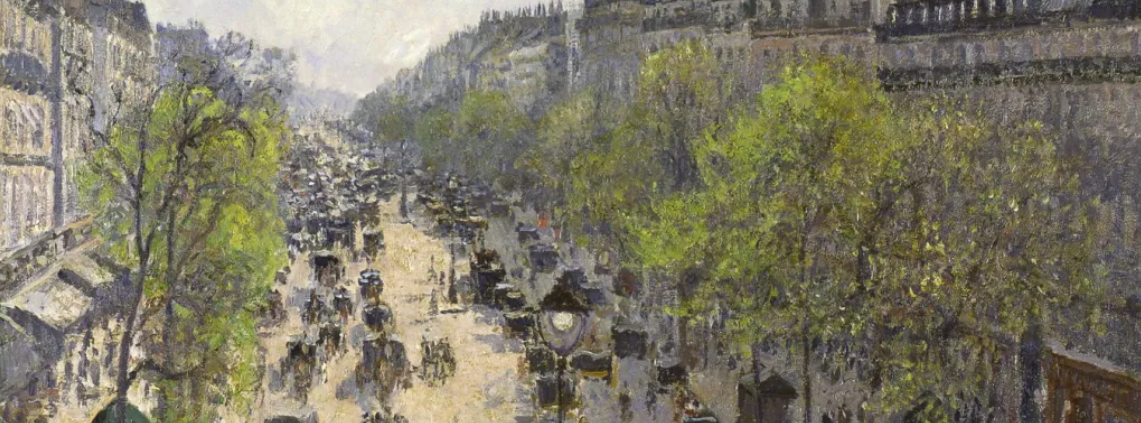Aerial perspective
Aerial perspective or atmospheric perspective, is a technique used in art to create the illusion of depth and distance in a two-dimensional artwork. It mimics the way objects appear in the atmosphere due to the effects of light, air, and distance.
This technique relies on the following:
- Color and Value: Objects that are closer to the viewer typically appear more vivid, with sharper details and darker colors. As objects recede into the distance, they become lighter in value and less saturated in color. This is because atmospheric particles scatter and attenuate light, giving less emphasize on distant objects.
- Contrast: As objects move farther away Contrast decreases . From an aerial view, the contrast between objects and their background disappears as distance increases. This highlights depth, as distant objects fades into the atmosphere.
- Detail: Details become less defined as objects move further into the distance. small details disappears, and shapes become less distinct. This imitates the way our eyes perceive far objects, which may appear blurred and less sharply defined.
- Overlapping Objects: Aerial perspective often includes overlapping objects, through partially obscuring objects behind them. This further emphasizes the sense of depth in the artwork, as it suggests a spatial relationship between objects in the scene.
Artists use various techniques to achieve aerial perspective, including changes in color temperature, the use of haze or mist, and adjusting the level of detail and contrast. By employing these techniques effectively, artists can create realistic and immersive landscapes, architectural drawings, and other types of artwork.
Many people read our art newsletter ; you should too!


